10 Reasons Nothing Ever Gets Done on the Border Crisis
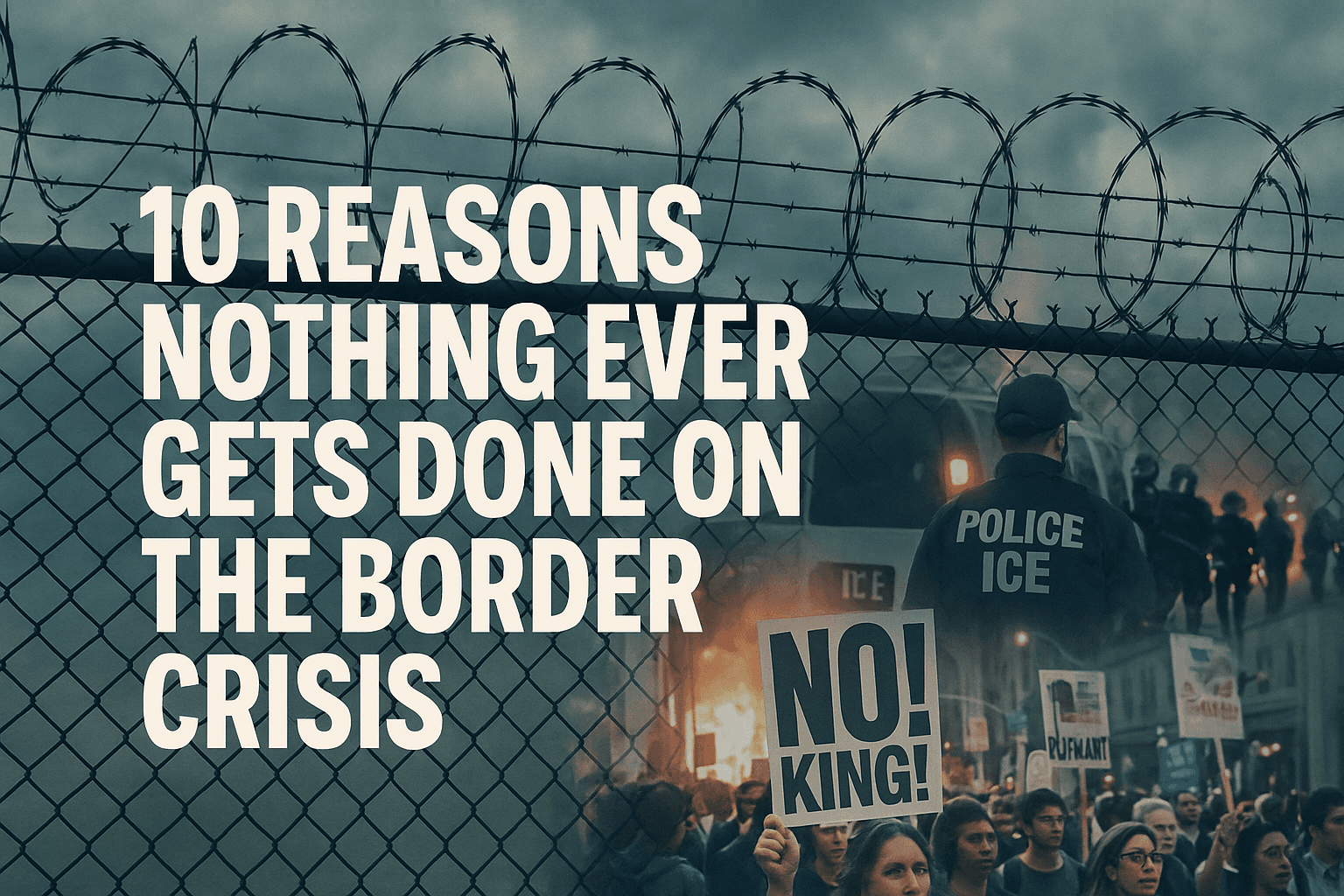
ICE raids, Los Angeles riots, “No King” protests. It’s all people can talk about these days as immigration is front and center in the American social and political zeitgeist. For many voters, this all may seem familiar.
And that’s because it is.
Immigration isn’t a new issue. It’s been hotly debated for decades. This isn’t the first year ICE has escalated enforcement tactics. And, it’s not the first time protests have erupted all over the country in response.
All of these things come around in circular fashion – and that’s by design.
Every couple of years we witness a surge in immigration crackdowns and the immediate and fiery reaction from candidates and party leaders who want voters to be scared or outraged by what they see on their TV and computer screens.
They want voters to see a nation in crisis, and the only people who can save it are members of “their team” while the “other side” only seeks to do harm. Meanwhile, no one talks or acts on meaningful reform because there is no incentive to act.
Want to know why that is? Here are 10 reasons nothing ever gets done on the border crisis.
1. The Outrage Economy: Everyone’s Furious, No One’s Fixing It
If there is one thing politicians on both sides of the aisle know how to do, it is tap into the outrage that surrounds the immigration issue. Immigration crackdowns can be used to fire up supporters and fuel donations.
Whenever the issue surfaces, either as a result of a large influx of migrants at the southern border, ICE (Immigration and Customs Enforcement) raids, or protests, Republicans always use words like “invasion,” “chaos,” “flood of illegals,” “open borders,” which rile up the base.
In response to demonstrations in LA, Republicans have also thrown in phrases like “violent insurrection.” Fundraising emails include vivid descriptions of violent protests, destruction, and foreign flags in downtown LA, prompting donors to “stand with ICE.”
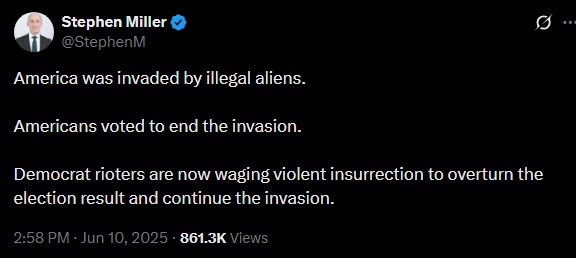
Meanwhile, Democrats use targeted language like “family separation,” “xenophobia,” “attacks on human rights,” “cruel and unnecessary.” They have also started to accuse ICE of “terrorizing communities” with their raids.
Democratic fundraising efforts frame the ICE raids and subsequent military deployment in Los Angeles as "authoritarian overreach.” They urge support for legal and community defense for immigrants, prompting donors to “defend democracy” and “protect families.”
And the images that accompany this partisan battle between destroying the country versus destroying people’s lives give partisan media outlets plenty of ways to target people’s anger by perpetuating inflammatory narratives.
The fundraising machine does not allow any moment to go to waste. Even the appalling images of a sitting US senator, Alex Padilla, being slammed to the ground and arrested are talked about as a political stunt on the right and used to raise money on the left.
Here is an email Padilla sent to donors the next day:
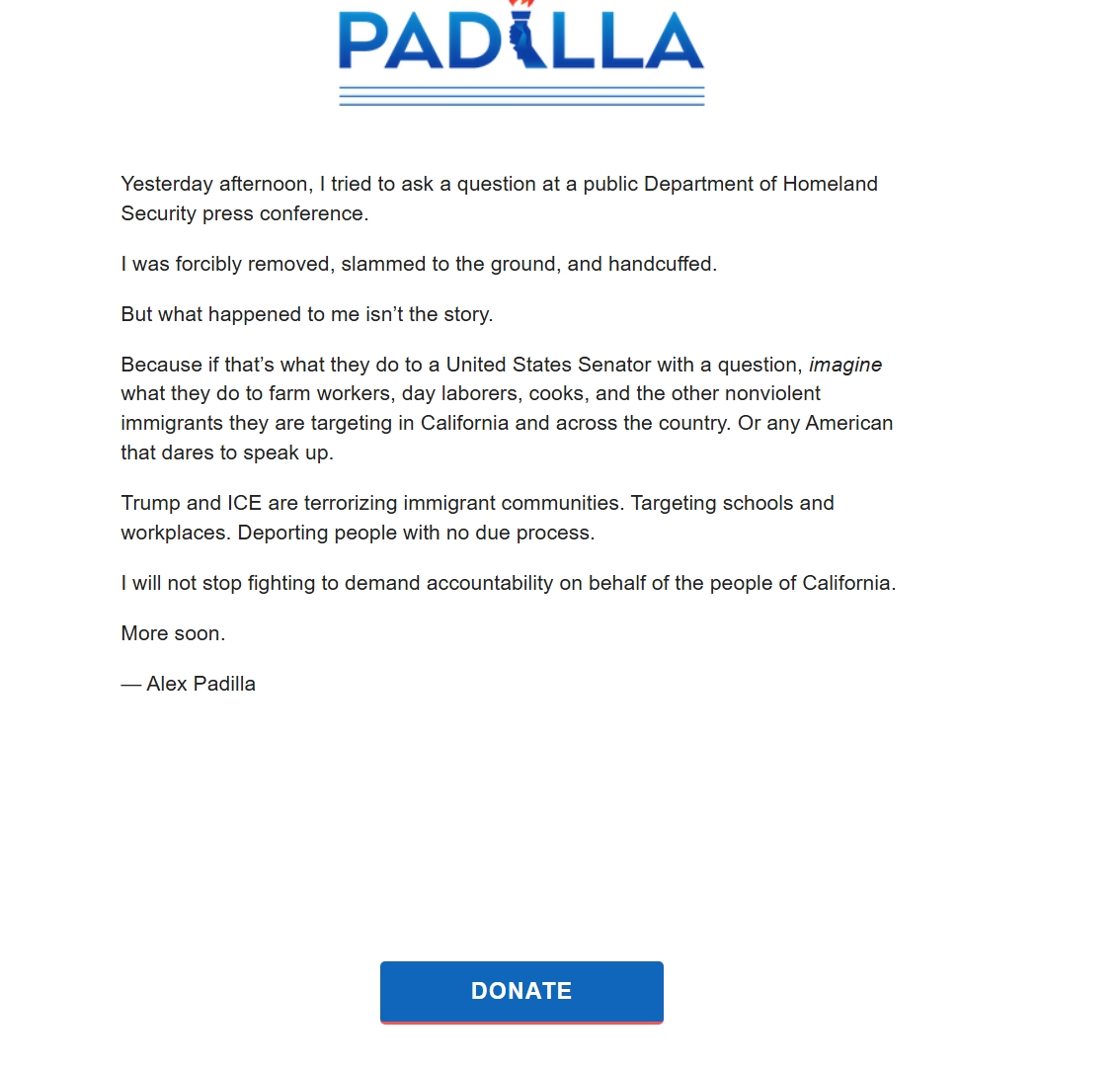
2. It Is Easy to Manipulate an Audience When You Only Give Them Half the Story
The goal of partisan news outlets like Fox News and MSNBC is to drive a single narrative about any given issue to feed their echo chamber: our side is good, and the other side is evil. It’s about giving the audience a boogeyman to hate or fear.
On one side, Los Angeles is overrun by murderers, rapists, and drug dealers. On the other side, Donald Trump is an authoritarian fascist who is terrorizing LA residents.
Either way, the audience is only given half the story accompanied with images and targeted language designed to shape a person’s view of something in a very specific way – that being to blame either weak Democratic leadership or excessive Republican overreach.
Check out Fox News coverage:
Vs MSNBC coverage:
It’s like their core audiences exist in two different realities. Unfortunately, the echo chamber problem is only worsening as the media and the sources from which news is obtained become increasingly fractured.
How many people only get their news from cable TV? From Facebook? From X? From TikTok? This allows the two major parties and their candidates to micro-target in a way they never have been able to before, enabling them to control the messages that appear in their targeted audience’s feeds.
3. Why Both Parties Secretly Love the Border Crisis
The border has long been a perfect political tool for politicians on both sides of the aisle: It is scary, visual, and an issue that is not easily solved. For example, from January to June 2024, the Republican Party spent $247 million on political ads focused on immigration.
Ads on the topic outspent all other issues by $40 million, and much of the national campaign narrative focused on what Republicans called an “open border crisis” and tied other issues like fentanyl, national security, and jobs to it.
Republicans outspent Democrats 5-to-1 on the issue. However, Democrats became much more reactionary as the campaign cycle progressed, not wanting to look weak on the subject as Republicans accused them of letting criminals into the country.
Victims like Laken Riley were used to inflame tensions even when her father condemned the politicization of her death.
The Democratic Party’s approach was solely to ridicule Trump. For example, the unusual and debunked comments about migrants eating dogs and cats in Springfield, Ohio, lingered in Democratic media talking points for weeks.
And not only did this approach fail to address the complex issue of immigration in the United States, but it also only served to distract from other election issues voters cared about.

4. This Is Why Immigration Never Gets Fixed—By Design
Here’s the thing: Congress has had plenty of opportunities to pass reform. But in the end, they don’t.
Problems can’t be campaign fodder if they’re solved. Republicans can’t campaign off a “border invasion” and Democrats can’t fundraise off “protect families” if both sides pass a comprehensive bill that addresses both security and humanitarian concerns.
So many different bills dealing with immigration have emerged over the last 25 years.
This goes back to The Secure America and Orderly Immigration Act of 2007, sponsored by Republican US Sen. John McCain and Democratic US Sen. Ted Kennedy. It combined a pathway to citizenship for millions of immigrants and strengthened border security.
Despite broad bipartisan support, including from President George W. Bush, the bill failed – as did the “Gang of Eight” bill in 2013 that was supported by President Barack Obama and created a 13-year path to citizenship for approximately 11 million immigrants, increased border security funding and visa tracking, and overhauled the visa program.
The more the system incentivized partisan division, the less progress was made on these bills.
The 2013 bill, for example, was able to pass the Senate, but was never brought up for House consideration. Any bills under Trump or Biden crumbled due to pressures from party leaders, including a 2024 bill under Biden that toughened border security.
It was, after all, an election year and all that mattered was the campaign narrative and political point scoring.

5. Voters Want Reform. So Why Do We Keep Getting Raids?
A comprehensive approach to immigration reform is in line with the desires of many Americans.
Even in an election year in which the GOP focused much of its resources on a “mass deportation” message, Pew Research found that 59% of all voters believed undocumented immigrants should be allowed to stay.
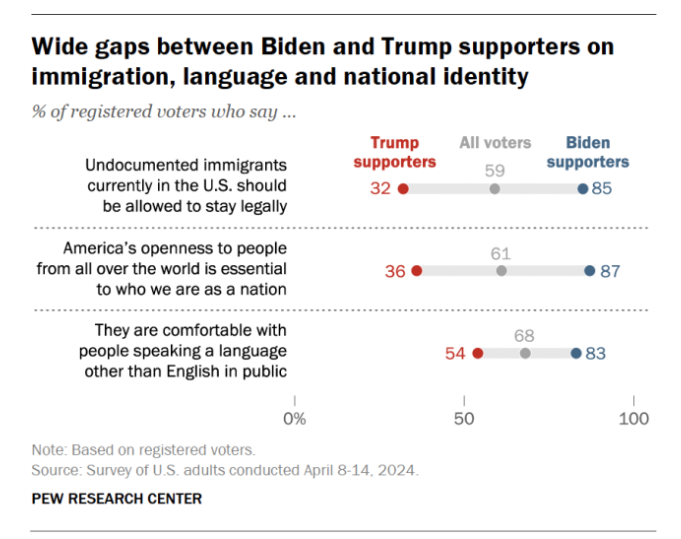
However, a shift in public opinion can be observed starting in 2021 and 2022. Gallup found in March 2020 that only 32% of voters surveyed were concerned “a great deal” about illegal immigration. However, that number jumped to 40% the following year.
Then, in March 2024, at the height of campaign messaging, the number jumped again to 48%, showing how effective the narrative was as voters constantly heard about a “border crisis,” “criminals running wild,” and “surging crime rates.”
Notably, there was a massive surge in border crossings in 2021 with US Customs and Border Protection reporting roughly 1.7 million encounters in FY2021. This resulted in increased media coverage and viral moments that focused on security.
In the heat of the 2024 election cycle, Gallup found 26% of US adults surveyed “strongly favored” deporting all undocumented immigrants in the US (47% overall in favor) – while 51% were overall opposed.
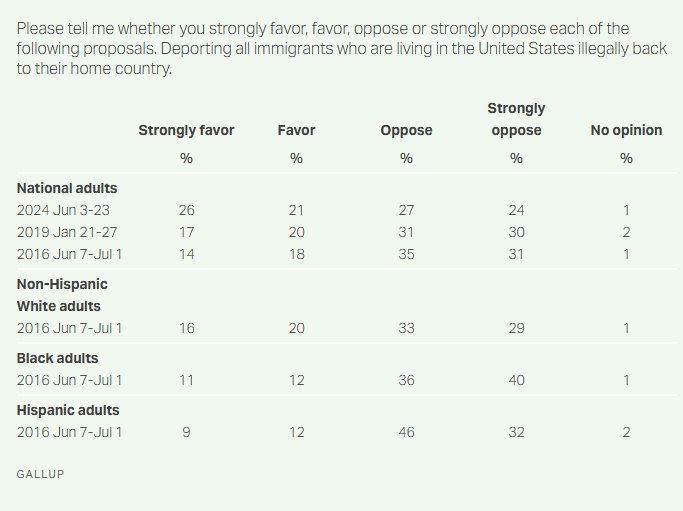
Voters were more cognizant of the need for border security reforms. However, a majority still hold the view that a pathway to citizenship should be on the table as long as certain requirements are met (Gallup: 70% overall support in June 2024).
6. Election Year, Time for a Crackdown
ICE raids spike every election year. Coincidence? Or political theater meant to rile up voters while distracting from the total failure to govern?
- 2004 & 2006: Under President George W. Bush, ICE operations ramped up, and the Secure Communities program expanded. Some analysts argued that enforcement helped consolidate support among immigration-skeptical voters.
- 2010: A midterm year, the Obama administration significantly expanded deportations, reaching a record of over 390,000 removals. This was partly in response to GOP criticism that he was weak on border security.
- 2016: During Trump's campaign, rhetoric around raids increased. After his election, DHS launched several highly publicized ICE operations in early 2017 that were interpreted by immigrant communities as a direct result of campaign promises.
- 2020: Despite the pandemic, the Trump administration pushed controversial immigration enforcement actions, including deploying ICE to sanctuary cities and targeting DACA recipients. Critics said these were “campaign-motivated raids.”
- 2025: Following the hotly contested 2024 election, a surge in ICE raids in major cities across the US were touted as “promises kept” by the Trump administration and an insistence that “this is what Americans voted for.”
7. Immigration Policy Through Executive Order
As the political divide between the parties widens, Congress has increasingly become paralyzed by partisan gridlock. Not only has this factored into a lack of immigration reform, but it has been used as an excuse by modern presidents to enact policies through executive order.
For example, Obama signed DACA (Deferred Action for Childhood Arrivals) in 2012, which protected certain undocumented immigrants brought to the U.S. as children, after Congress failed to pass the DREAM Act.
Trump signed his now-infamous Zero Tolerance Policy in 2018, which inflamed the discussion over family separation and “children in cages.” He also declared a national emergency to divert federal funds to border wall construction.
Biden suspended border wall construction and created a task force to reunite separated families Many of his executive orders on the issue were rolling back or undoing the executive orders of Trump’s first term in office.
Not only does immigration policy via executive order blur the lines between the legislative and executive branches, but it also does not create lasting policy. Trump and Biden focused on undoing the executive orders of the previous administration, resulting in unstable national policy.
8. Why Immigration Is Just Another Weapon in the Culture War
Immigration is a key fixture in a culture war designed to divide American voters.
Real reform isn’t profitable for parties or special interests. What is? Telling people they have to pick a side, getting them to yell about it, and watching social engagement and campaign cash go through the roof.
It is all in the name of what Tucker Carlson astutely called “The Great Outrage Machine” in 2019, though while Carlson comes close to hitting the nail on the head, he too falls into the trap of making it only about Democrats who target people’s outrage.
When, in fact, both parties do it. And in the end they are only truly speaking to a minority of voters who – in this case – believe either immigration is destroying our country or people who want stronger border security are heartless monsters.
There is no profit in appealing to or finding common ground. Instead, it is only about speaking and appealing to the extremes of both parties. It is this sliver of voters on either side that has been given the most control over US policy and the country’s lack of clear direction.
9. The System Isn’t Broken. It’s Rigged.
It may seem like the system has failed, but in truth it is working exactly as designed. Keep people scared/angry, divided, and distracted while the politicians who refuse to deliver meaningful reform on immigration (and other issues) cruise to re-election in safe districts.
The reason the partisan narrative targets the extreme minority in this country is because a minority of voters ultimately decide elections in low-turnout partisan primaries in 90% of electoral contests in the US, many of which shut out millions of independent voters every cycle.
This is because nearly all electoral districts in the US are safe for one party or the other in winner-take-all contests either because these districts are drawn to keep the majority party in power or because people are moving to be near like-minded neighbors.
Party leaders and special interest groups only need to mobilize a small number of voters to have disproportionate influence over election outcomes. As long as a party's base support can threaten candidates, politicians will seek only to appease these voters.
10. Protests Can’t Solve the Problem If We Don’t Fix Elections
In June 2025, tens of thousands of people took to the streets across the US to protest immigration crackdowns under President Trump, and while it is every person’s right to protest their government, these protests alone cannot change anything in a system that incentivizes division and a rejection of lasting solutions.
They end up playing into the hands of the partisan powers that be. The images and videos on TV screens and in social feeds show a nation on the edge, a divided nation, a combustible situation that could lead to all-out chaos. It feeds the campaign money machines for both parties as voters are spurred on to be on the right side of history.
Until we have elections that give voters more choice, ensure every voter has an equal and meaningful voice, bolster competition, and incentivize accountability, these protesters will continue to mobilize only to scream into the void.
 Shawn Griffiths
Shawn Griffiths







